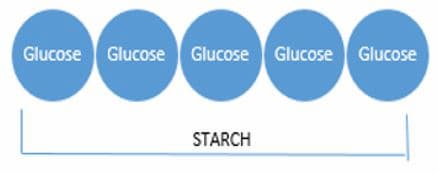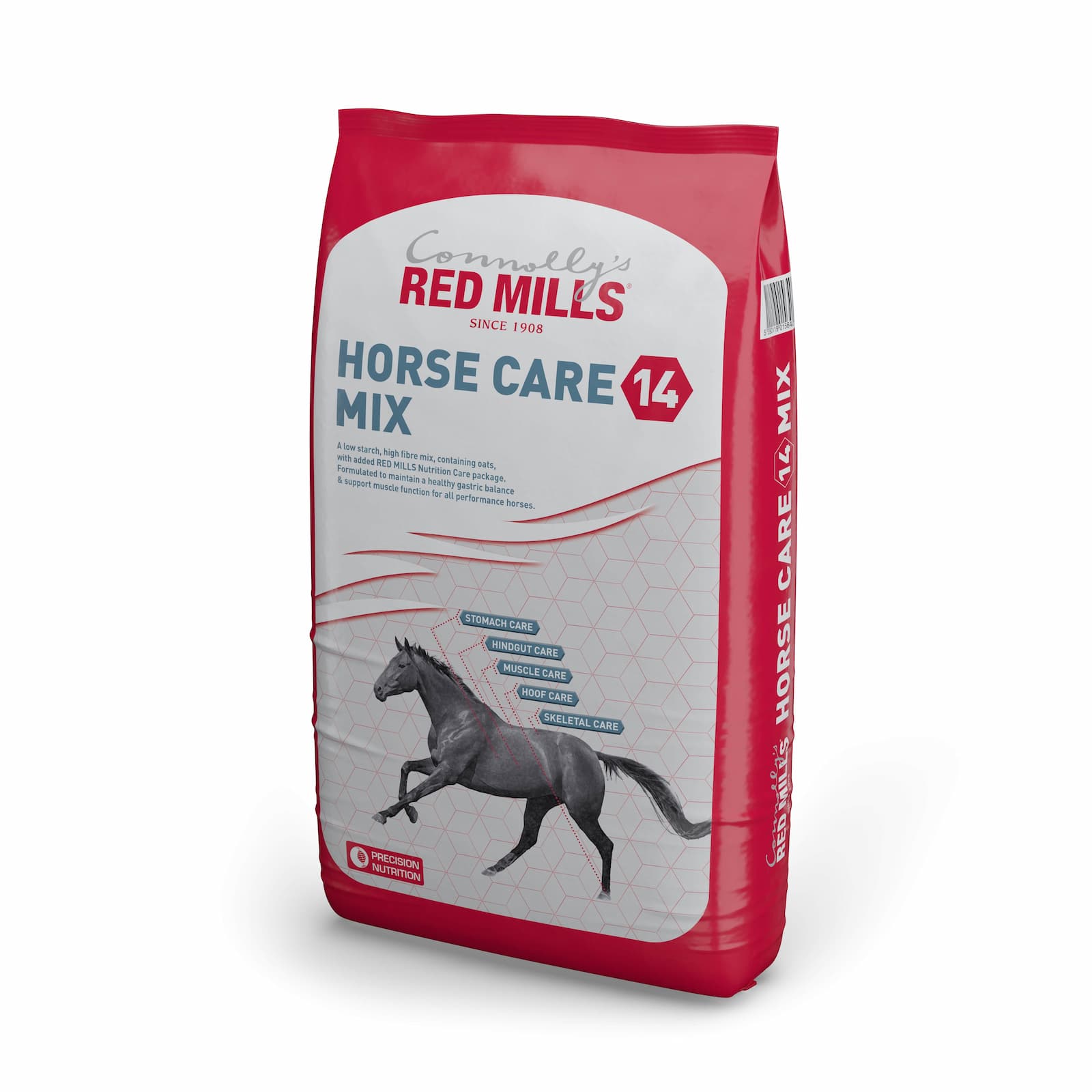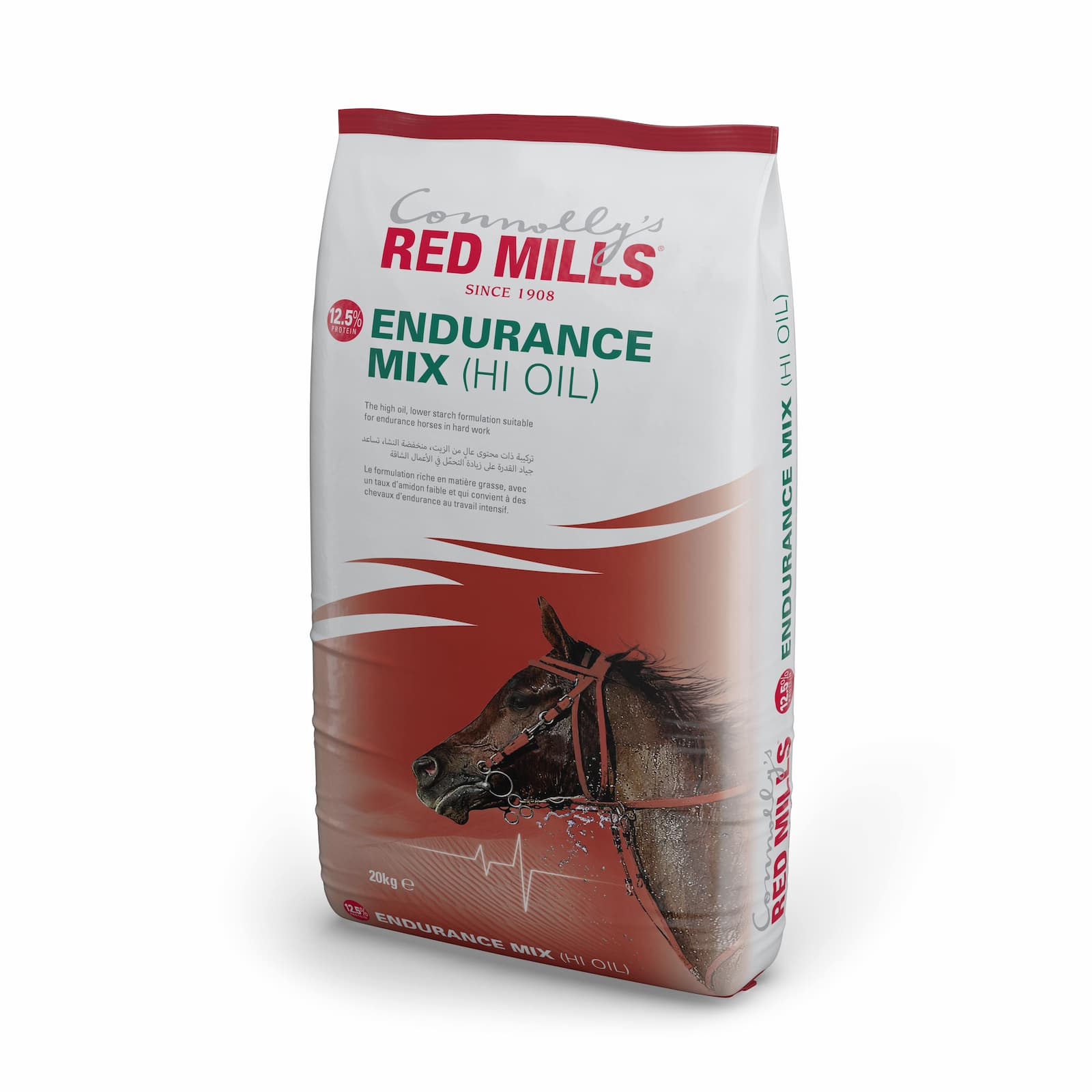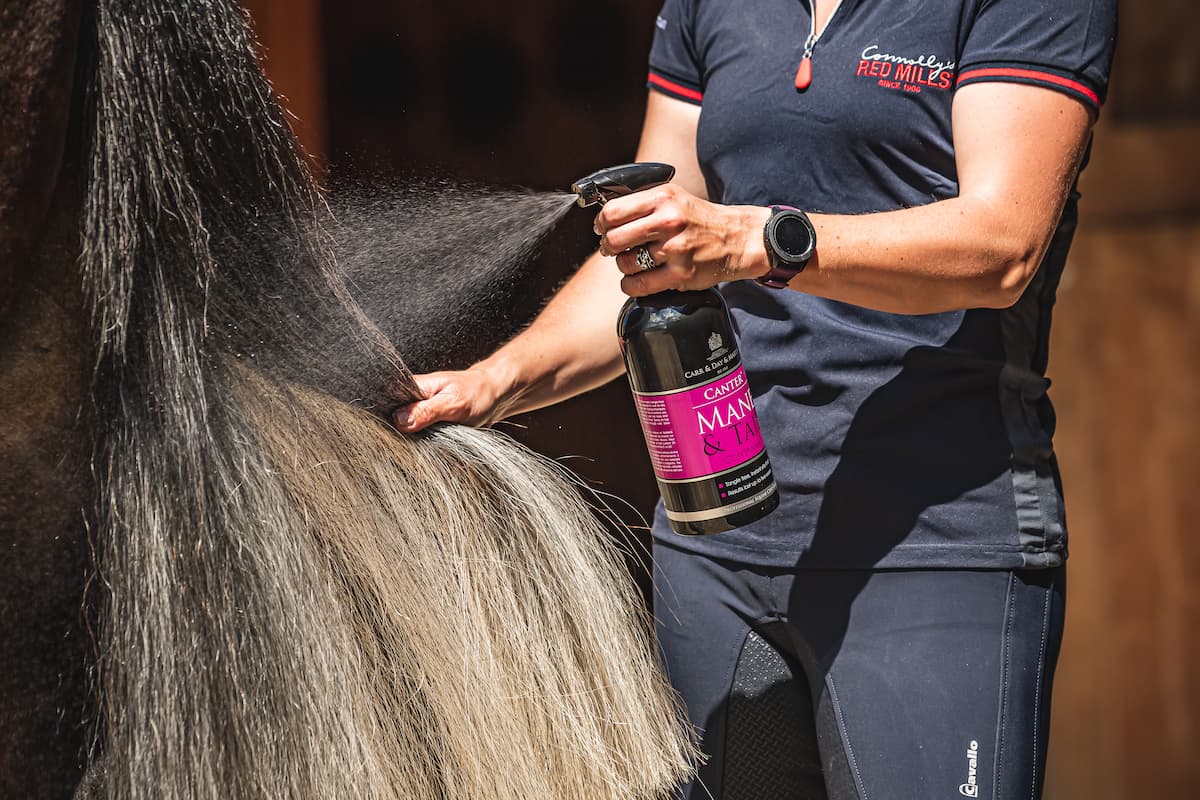May, 2020
We are often bombarded with conflicting advice and opinions on starch. Do horses need starch at all? What is it and how does the horse digest it? How much, if any, should you feed? Does your horse need a ‘low-starch’ feed and what does this mean? This article will try to straighten out some of the common misconceptions associated with starch feeding, by tackling the most common questions.
What are Carbohydrates?
In the equine diet there are two groups of carbohydrates: structural and non-structural.
Structural carbohydrates are the fibrous portion of plants (e.g. cellulose and hemicellulose). Forages such as grass, hay and haylage, and fibrous feed ingredients such as oat hulls and soya bean hulls provide the horse with structural carbohydrates, more commonly referred to as fibre.
Structural carbohydrates are resistant to enzymatic digestion in the small intestine and must be broken down in the horse’s hindgut, with the help of microbes that live there. Microbial fermentation breaks down fibre into a useable form of energy know as volatile fatty acids or VFA’s.
Non-structural carbohydrates (NSC) such as sugar and starch, are in almost all feedstuffs, including cereals, grass and preserved forages. The level of NSC contained in different feedstuffs varies significantly. Grass has a low starch content but is high in sugar, ranging from 7-30% on a dry matter basis depending on environmental conditions. On the other hand cereal grains contain high levels of starch for example oats can contain over 40% starch.
| Carbohydrate class (chain length) | Structural or non-structural? | Examples | Type of digestion | Site of absorption |
|---|---|---|---|---|
| Monosaccharide (1 molecule) | Non-structural | Glucose, fructose | Enzymatic | Small intestine |
| Disaccharide (2 molecules) |
Non-structural | Lactose, maltose | Enzymatic | Small intestine |
| Oligisaccharide (3-10 molecules) | Non-structural | Raffinose, stachyose | Enzymatic | Small intestine |
| Polysaccharide (>10 molecules) | Non-structural | Starch | Enzymatic | Small intestine |
| Polysaccharide (>10 molecules) | Structural | Cellulose, hemicellulose, pectin | Microbial fermentation | Large intestine |
Table 1: Carbohydrates, classes, examples and methods of digestion
WHAT IS STARCH?
Starch is a polysaccharide classed as a NSC and is composed of long chains of glucose (sugar) molecules (Figure 1). Plants store starch within their cell walls so that it can be used as an energy source for growth and development, when these plants are consumed by the horse the starch is digested and utilised as energy. Although cereals such as oats, maize and barley tend to contain higher levels of starch (mostly in the grain itself), almost everything the horse eats, including grass, hay and haylage will contribute to the total amount of sugar and starch eaten per day.
When the horse consumes starch, the glucose chains are primarily broken down by enzymatic digestion in the small intestine by an enzyme called amylase, the product is then absorbed into the bloodstream as individual units of glucose. A rise in blood glucose levels, triggers the release of insulin from the pancreas, causing uptake of glucose into cells, such as muscle cells. The horse can use this immediately for energy needs and what’s not used is stored.
Starch can be problematic to your horse if fed incorrectly or if your horse is allowed unlimited access to feedstuffs with high starch contents. Some conditions can be exacerbated by starch such as Recurrent Exertional Rhabdomyolysis (RER) or “tying up”, Polysaccharide Storage Myopathy (PSSM), Equine Gastric Ulceration Syndrome (EGUS) and laminitis. It is therefore important that we understand how to feed starch safely and effectively.

Safe and efficient starch digestion in the horse is largely dependent upon the processing or cooking method (of the grain), the individual meal size and the starch level of the feed. Feeding large meals of unprocessed, high starch cereals (e.g. whole barley), will increase the risk of undigested starch reaching the hindgut.
If excess starch reaches the hindgut the starch is rapidly fermented by lactic acid producing bacteria. This creates a more acidic environment in the hindgut,, which can lead to several problems including colic and laminitis.
The starch level of a feed directly affects how much starch the horse receives in one meal. Feed manufacturers generally refer to starch levels in percentages, e.g. a 36% starch feed is the same as saying 360g of starch per 1000g of the feed. Ideally no more than 2g of starch to 1kg of bodyweight (BW) should be provided per meal, which means up to 1000g of starch per meal for a 500kg horse.
Table 2: How the amount of starch varies per meal depending on level and size based on a 500kg horse (figures in red are over advised limit)
| Feed starch level | Amount of starch per kg of feed | Meal size | Total amount per meal | Amount starch provided per kg BW |
| 18% | 180g | 2kg | 360g | 0.7g |
| 18% | 180g | 3kg | 540g | 1.1g |
| 36% | 360g | 2kg | 720g | 1.4g |
| 36% | 360g | 3kg | 1080g | 2.2g |
Table 2 indicates how easily you could go over the advised limit of 2g of starch/kg BWin a 500kg horse, therefore meal size and starch level are both important considerations to ensure safe and efficient feeding of starch.
To further optimise starch digestion in the small intestine Connolly’s RED MILLS use advanced cooking technology, including steam flaking and double pelleting (Figure 2). These processing methods allow for increased exposure of the starch contained in the grain, to the enzymes in the small intestine, meaning enzymatic digestion is optimised where it should be, resulting in minimal (if any) starch entering the hindgut. Choosing concentrate feeds that have been processed or cooked in this way will reduce the risk of hindgut acidosis and the problems associated with this, from occurring.
Importance of starch to the horse
All living things require energy to support life; every physiological process e.g. respiration, digestion lactation and many more non-muscular processes, all need energy to happen. When we think of energy production we generally think of what is needed for exercising and muscle contraction. To meet all energy demands the horse metabolises carbohydrates and fats, among other nutrients, using two key energy producing pathways known as aerobic and anaerobic metabolism.
Aerobic metabolism uses carbohydrates, including starch and fats, to produce energy, but only when oxygen is available. Aerobic metabolism mainly provides energy for non-muscular physiological processes and lower intensity exercise e.g. walk, trot and low intensity long distance disciplines such as endurance.
Anaerobic metabolism uses glycogen (stored glucose) to produce energy, but this pathway does not use oxygen. Anaerobic metabolism is the primary pathway used during intense, short duration exercise (e.g. acceleration, jumping, galloping) it is therefore very important to performance horses.
Exercising horses will use both aerobic and anaerobic metabolism to differing degrees, depending largely on the individual, and the type and intensity of the exercise being performed. Performance horses can rarely meet energy demands based on a forage diet alone, and therefore the provision of some sugar and starch is essential, particularly as exercise intensity increases. Starch and sugars are also important after exercise to replenish muscle glycogen stores, especially during a multi-day competition, to optimise recovery rates.
Does starch affect my horse’s behaviour?
Feed cannot change your horse’s psychology or character, so unfortunately what you put in your horse’s bucket cannot turn a naturally fizzy Thoroughbred into a laid back Cob or vice versa. However, carefully selecting the type and amount of energy (calories) you provide can help to promote the desired behaviour. For example, if your horse is overly excitable, feeds that are based on slow releasing energy sources, (i.e. fibre and oil) can help to encourage an even temperament. On the other hand, if you have a laid back horse that lacks “sparkle”, feeds that are higher in starch can be beneficial by promoting energy levels.
What is a high starch or low starch diet?
Limited research is available about exactly how much starch the horse’s diet should provide and it is inevitable that this will vary depending on the individual. When assessing your horse’s diet it is important not only to look at the starch percentage in the hard feed, but also the total dietary intake per day.
Daily total dietary intake will include starch and sugar from fresh grass and/or preserved forage, it may be possible to get information on the sugar and starch content of your forage via a forage testing facility.
Most cereal-based concentrate feeds contain around 20-30% starch. However, low starch feeds containing less than 20% starch (e.g. Connolly’s RED MILLS Horse Care 10 and 14 Cubes) and ultra-low starch feeds containing less than 10% starch (e.g. Connolly’s RED MILLS PerformaCare and GROCARE balancers) are also available.
Does my horse need a low starch diet?
A low starch diet will be required if your horse is overly excitable or prone to certain conditions or disorders including;
- EGUS and/or colonic ulceration
- RER (tying up)
- PSSM
- Pituitary Pars Intermedia Dysfunction (PPID or Cushing’s disease)
- Insulin dysregulation
- Equine Metabolic Syndrome (EMS)
The total dietary intake of starch from all feed, including forage, must be considered. Some of the conditions above are exacerbated by dietary starch, if you are having difficulties managing a horse with any of these conditions, then you should discuss their diet with your vet and our team of nutrition experts.
Although it can have consequences if fed in excess or incorrectly, starch is undoubtedly an important component of the equine diet. Feeding small meals and choosing processed/cooked grains can help ensure starch is digested and utilised effectively.
Related Products
Contact our sales team via WhatsApp or email

Nicolas Gaumerais
Group Commercial Manager GCC Region
Based in the UAE, Nicolas Gaumerais is the Commercial Manager of Connolly's RED MILLS Group which includes Connolly's RED MILLS horse feeds and Foran Equine supplements sold in the GCC region. Nicholas regularly travels across the Gulf to meet customers.

Dominic Bligh
Group Commercial and Technical Executive GCC Region
Alternatively, reach out to Dominic Bligh who offers nutritional & technical support for Connolly's REDMILLS Feed and Foran Equine supplements. Dominic is also the Commercial Manager for Foran Equine Supplements. He regularly visits client's stables in the Middle East to advise on bespoke feeding programmes.












